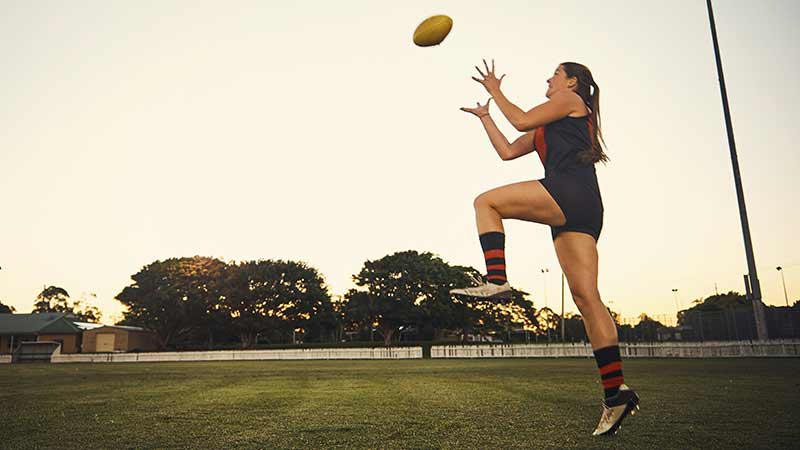If you’ve had interrupted income, or just haven’t been in a position to put as much into super as you’d like, catch-up concessional contributions may provide an opportunity to top up at a more convenient time.
You won’t always be in a position to put money into your super. You might be taking time off work to study or care for children, or you might have other financial commitments you’re prioritising like paying the mortgage.
Should the time arise when you can and want to contribute more to your retirement savings however, you may be eligible to make catch-up concessional contributions.
This is where, if you make or receive concessional super contributions that are less than the annual concessional contributions cap (currently $27,500), you could accrue unused cap amounts for up to five years.

What are concessional contributions?
Concessional contributions (which count toward your concessional contributions cap) include:
- Compulsory SG contributions, which are the before-tax contributions your employer is required to make into your super fund under the super guarantee, if you’re eligible.
- Voluntary salary sacrifice contributions, which are additional contributions you can get your employer to make into your super fund out of your before-tax income, if you choose to.
- Voluntary tax-deductible contributions, which are contributions you can make (such as when you transfer funds from your bank account into your super) that you then claim a tax deduction for.
Note, concessional contributions get special tax treatment, which for most people means you’ll generally pay less tax on your super contributions than you do on any income you receive.
What are the rules around catch-up concessional contributions?
To be eligible to make catch-up concessional contributions the following must apply, noting that catch-up concessional contributions can be made on top of the annual concessional contributions cap ($27,500).
- Your total super balance needs to be less than $500,000 on 30 June of the previous financial year. Note, your total super balance is broadly the sum of all your super accounts including pensions.
- You can only carry forward unused concessional contribution cap amounts from 1 July 2018.
- Unused cap amounts can only be carried forward for five years until they expire.
The below scenario shows what Bob could carry forward over one year
| Annual concessional super contributions cap | $27,500 |
| Concessional contributions made this financial year |
$10,000 |
| Unused concessional contributions that could be carried forward for up to five years | $17,500 |
What this means is, any time over the next five years, Bob could contribute up to the annual concessional contributions cap of $27,500 + the unused cap amount of $17,500, which would mean Bob could contribute up to $45,000 in concessional contributions in one financial year, if his total super balance is less than $500,000 on 30 June of the previous financial year.
If in this scenario, Bob also carried forward unused cap amounts from the four years following, he would also be able to contribute any additional unused amounts on top of that, noting his total super balance would need to still be under $500,000 on 30 June of the previous financial year to do so.
This example is illustrative only and isn’t an estimate of the investment returns you’ll receive, or fees and costs you’ll incur.
How could catch-up concessional contributions benefit me?
If you’ve spent time out of the workforce or haven’t had the money to contribute as much as you’d like to, the rules may give you the ability to make larger and or additional concessional contributions than you’d otherwise be able to make, and at a time that’s more convenient for you.
If you’re approaching retirement and are looking at ways to potentially maximise your retirement savings while minimising tax through the system, catch-up contributions could also give you some flexibility.
How do super bring-forward rules differ?
If you’re under age 75 at the start of the tax year, you may have heard that you might also be able to make up to three years’ worth of non-concessional super contributions in a single income year, if you’re eligible.
This means you may be able to put in up to three times the non-concessional annual cap of $110,000, which means you may be able to top up your super by $330,000 within the same financial year.
Note, non-concessional contributions are different to concessional contributions and there are rules you’ll want to be across. For more info, check out our article – Super bring-forward rules now apply to more people.
Meanwhile, if you’re interested in other ways you could add to your super and potentially benefit at the same time, check out these 10 ways to boost your super savings.
What other things should you know
- If you exceed concessional and non-concessional super contribution caps, additional tax and penalties may apply.
- The value of your investment in super can go up and down, so before making extra contributions, make sure you understand, and are comfortable with, any potential risks.
- The government sets general rules around when you can access your super, which typically won’t be until you reach your preservation age (which will be between 55 and 60, depending on when you were born) and meet a condition of release, such as retirement.
Speak to a super coach
If you’re an AMP super member and would like to know more about your super, book a 20-minute super coaching session.
What's next?

How to boost your retirement savings as super and tax laws change
29 March 2024 | Super If you’re looking to maximise your superannuation in the lead-up to retirement, it’s a good idea to be up to speed on any legal updates that could affect the super and tax landscape. Read more
Key points from the 2023-24 Federal Budget
10 May 2023 | Blog Find out how the 2023-24 Federal Budget proposals could affect you. Read more
Economic Implications of the 2022-23 Updated Budget - AMP
26 October 2022 | Blog Dr Shane Oliver and Senior Economist Diana Mousina explain what effects the updated Federal Budget could have on the Australian economy and investment markets. Read moreImportant information
Any advice and information is provided by AWM Services Pty Ltd ABN 15 139 353 496, AFSL No. 366121 (AWM Services) and is general in nature. It hasn’t taken your financial or personal circumstances into account. Taxation issues are complex. You should seek professional advice before deciding to act on any information in this article.
It’s important to consider your particular circumstances and read the relevant Product Disclosure Statement, Target Market Determination or Terms and Conditions, available from AMP at amp.com.au, or by calling 131 267, before deciding what’s right for you. The super coaching session is a super health check and is provided by AWM Services and is general advice only. It does not consider your personal circumstances.
You can read our Financial Services Guide online for information about our services, including the fees and other benefits that AMP companies and their representatives may receive in relation to products and services provided to you. You can also ask us for a hardcopy. All information on this website is subject to change without notice. AWM Services is part of the AMP group.